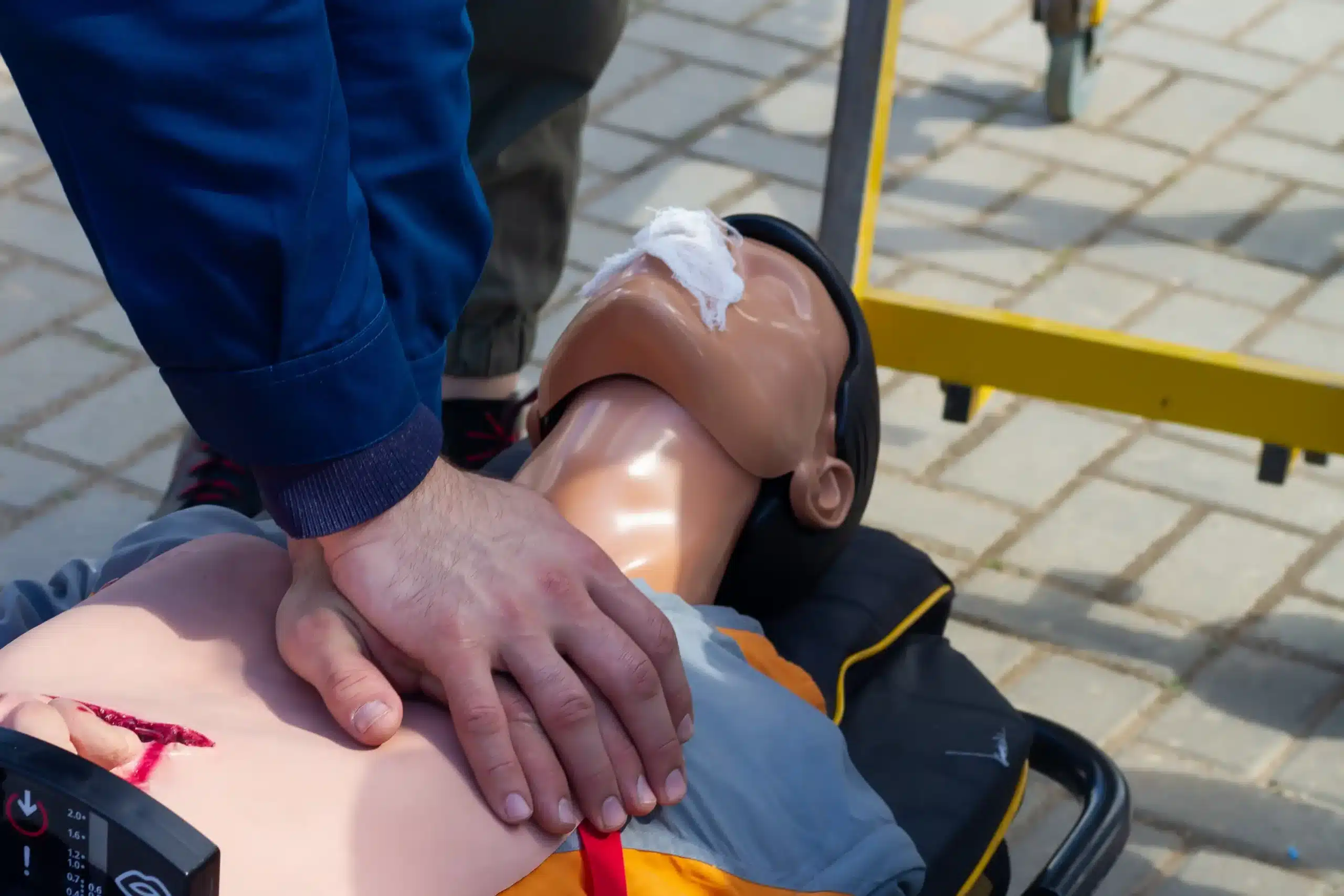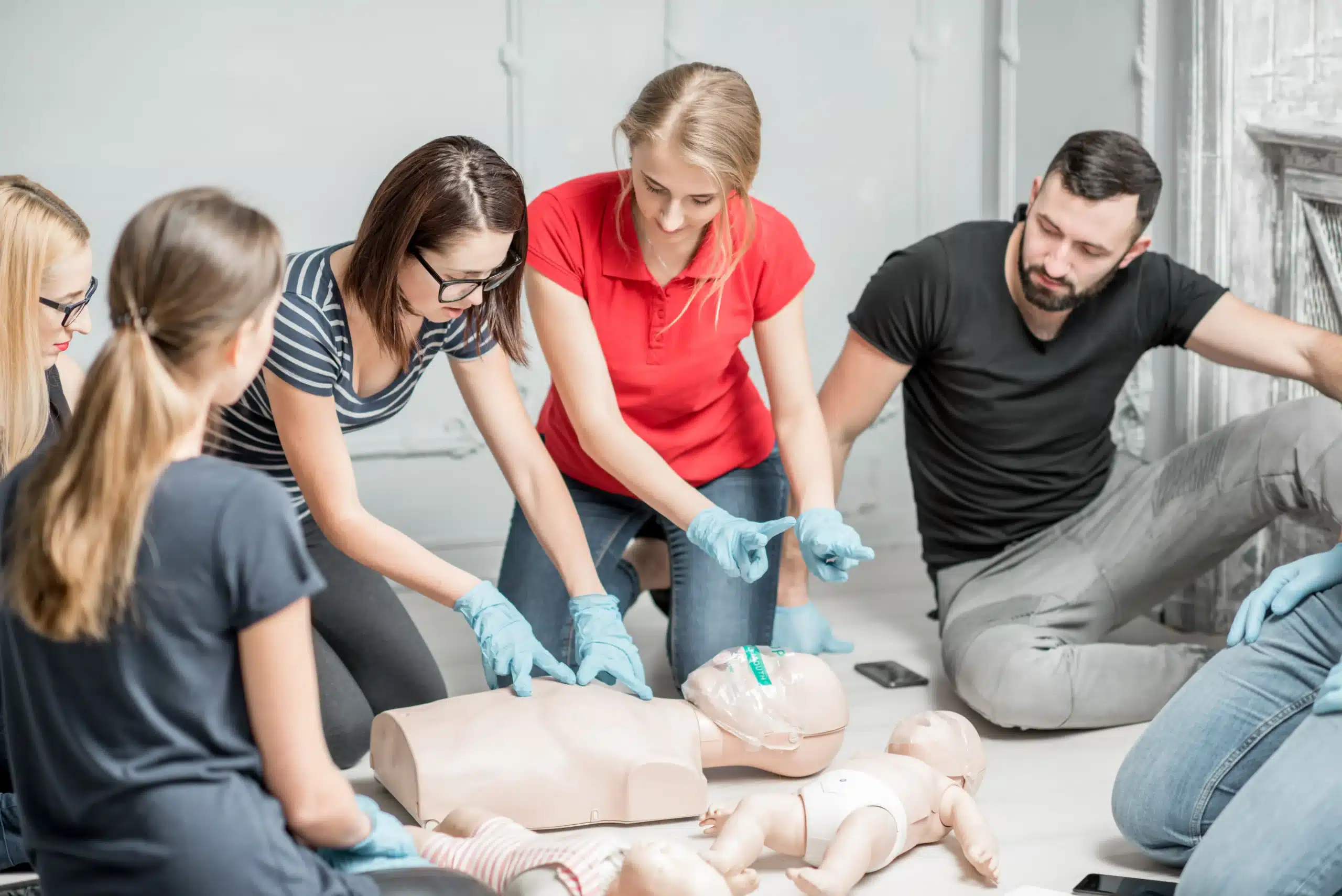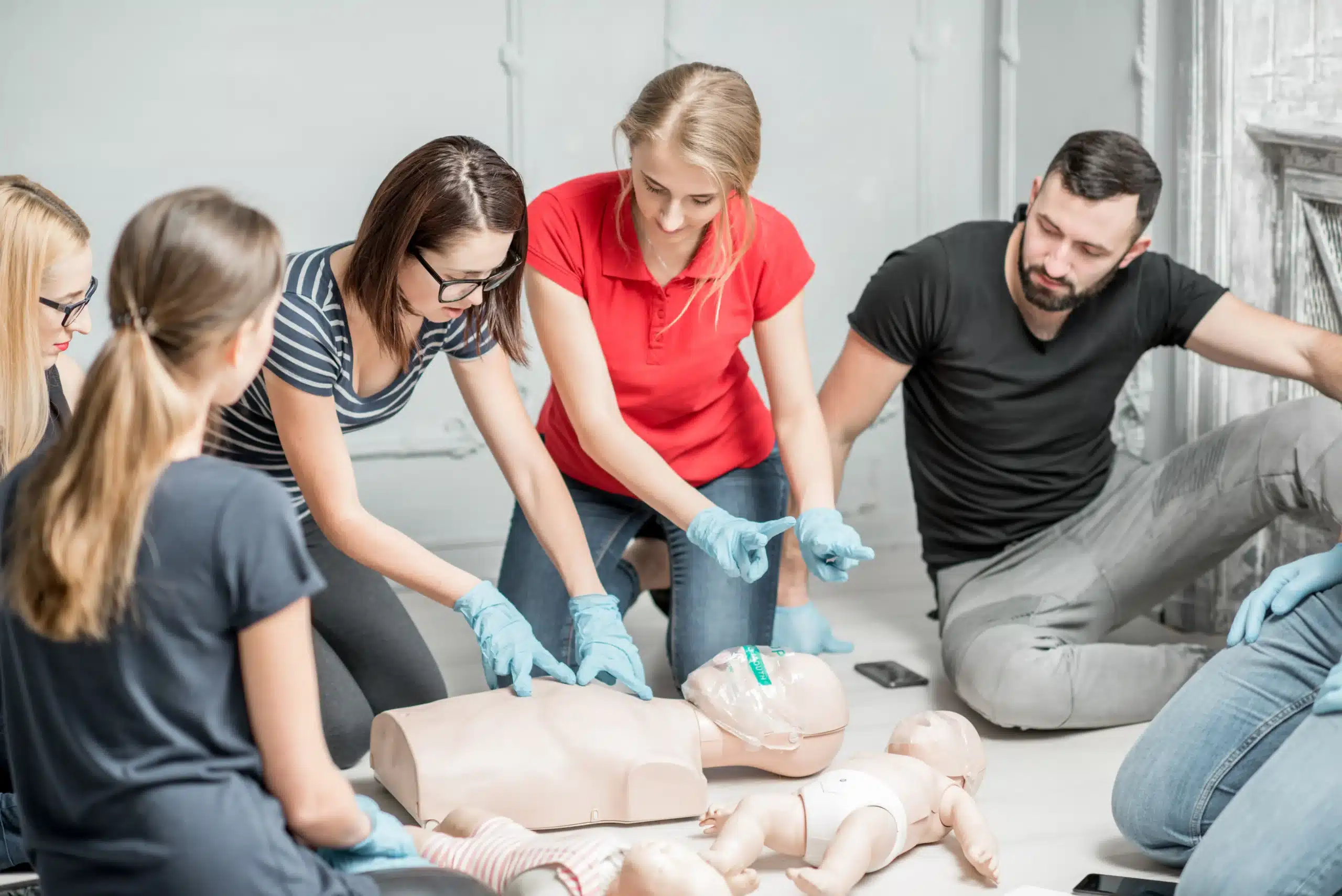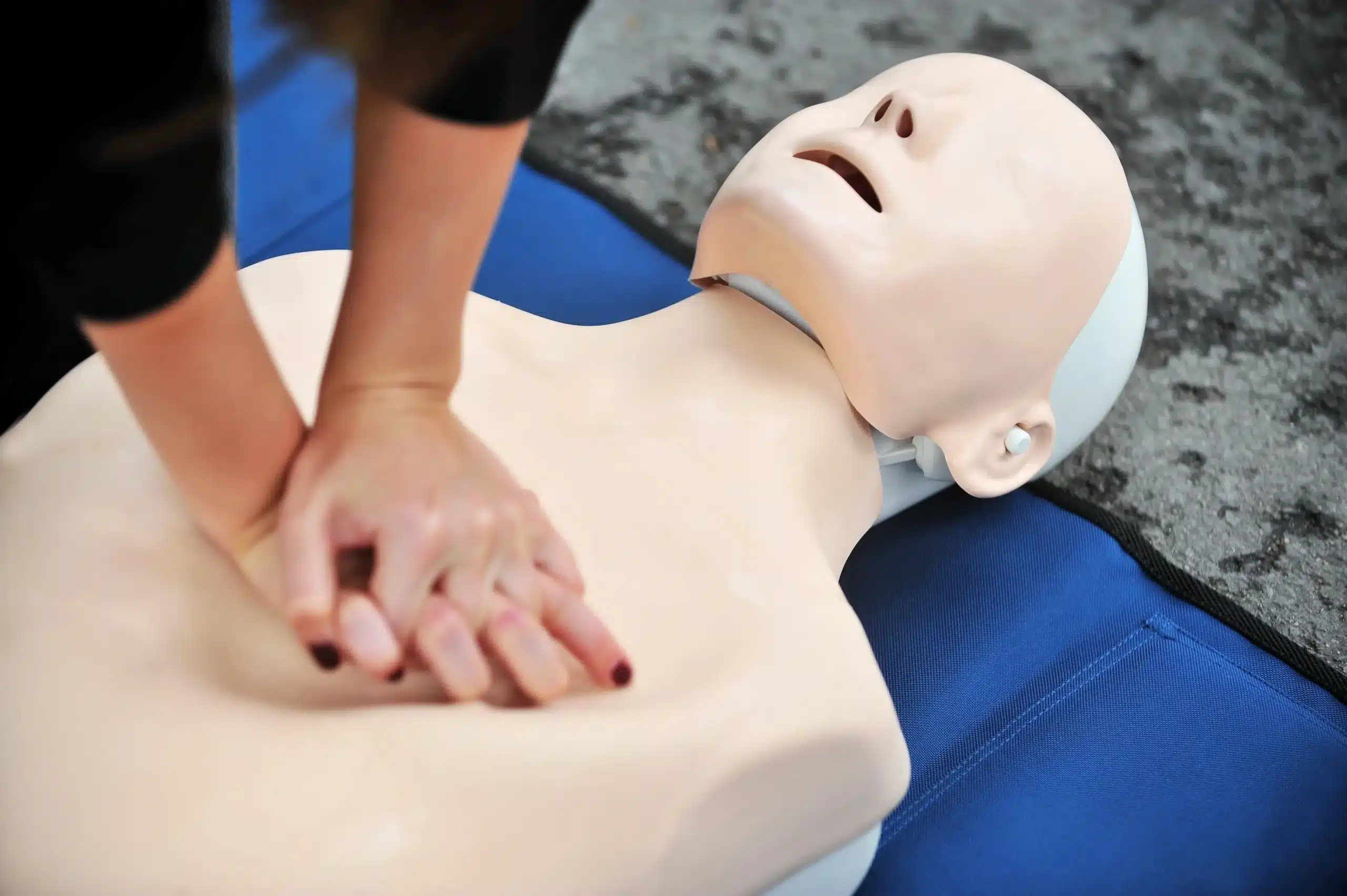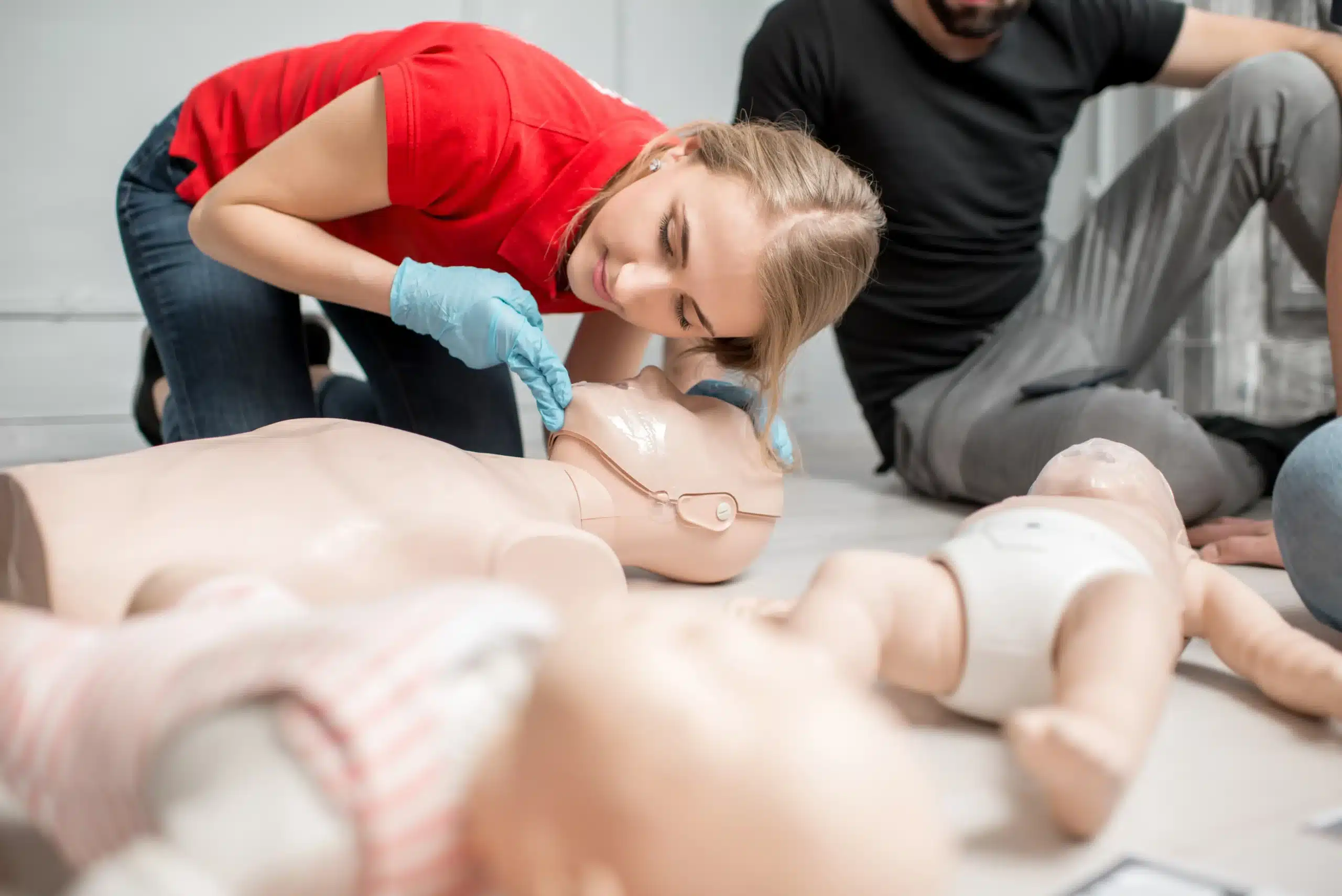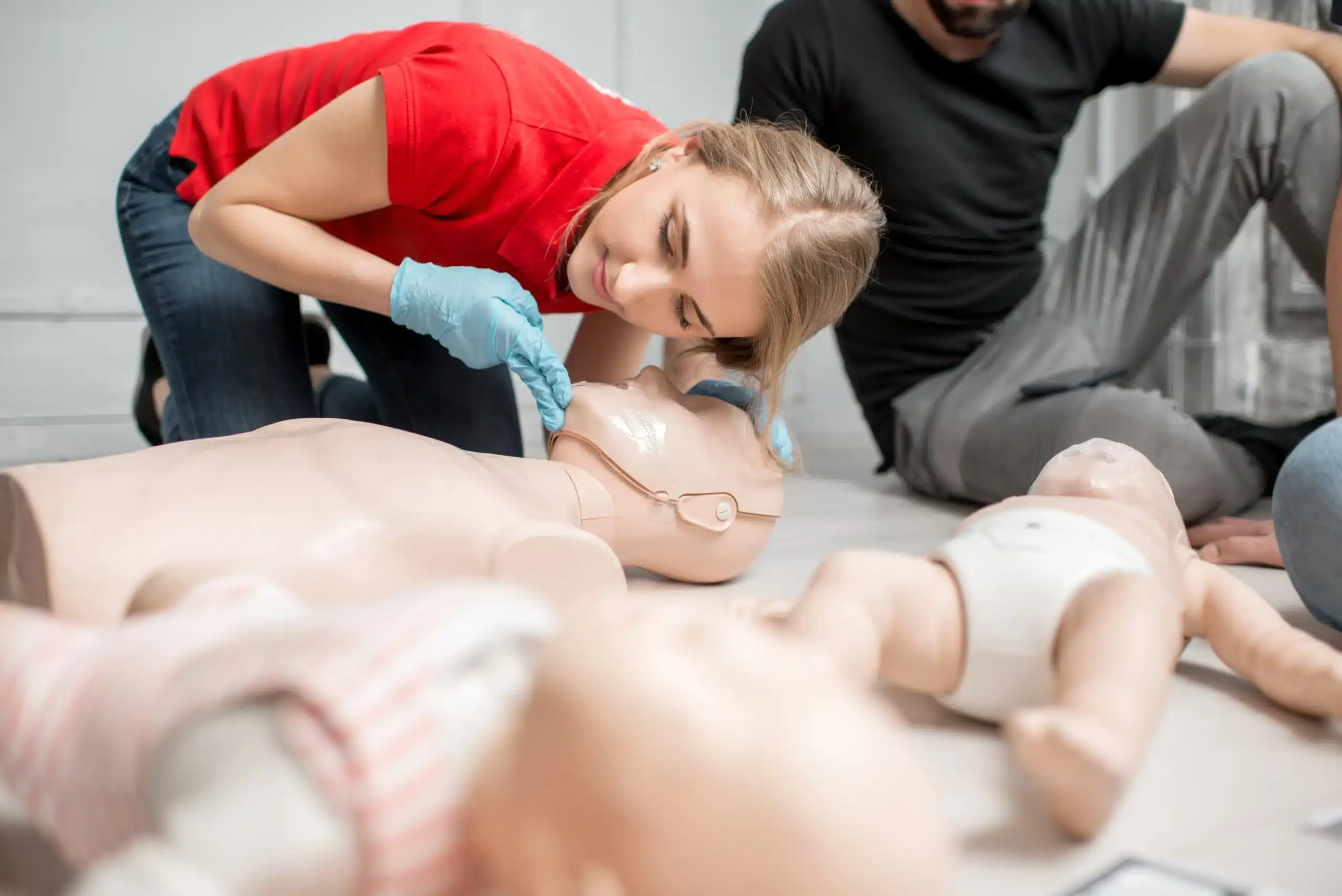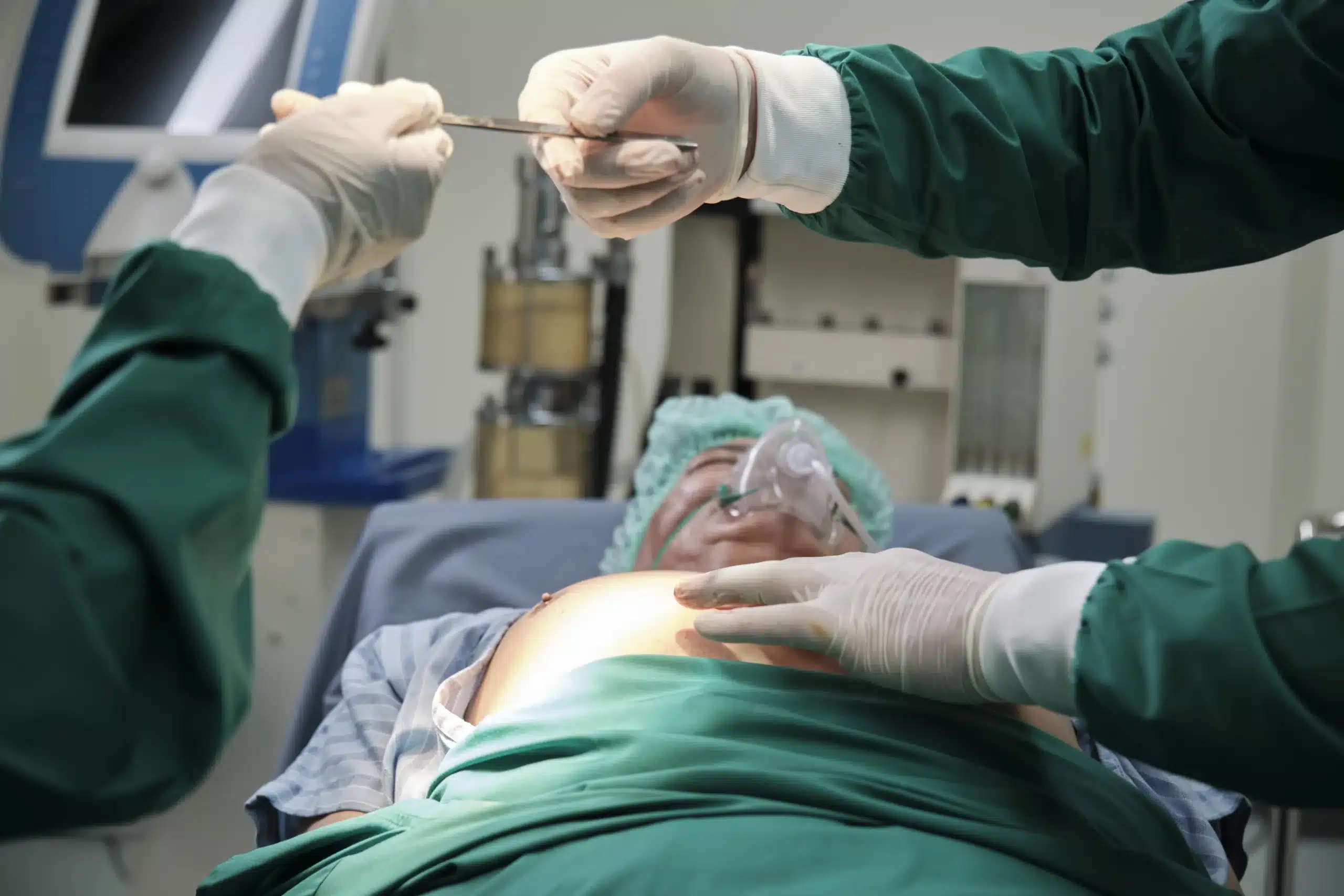Your BLS certification is more than just a credential—it’s a testament to your commitment to patient safety and high-quality care. Staying current through recertification ensures you’re always prepared to respond effectively in emergencies. This guide is designed to simplify the BLS recertification process. Whether you’re typing “BLS recertification near me” into a search engine or simply want to understand your options better, we’ll provide the information you need. We’ll cover everything from the importance of recertification and how often you should renew to finding the right course and what to expect during training. We’ll also address common challenges and offer practical solutions, making the process as smooth as possible.
Key Takeaways
- Maintain your BLS skills and knowledge: Regular recertification ensures you’re confident and prepared to provide effective care in emergencies. Refresher courses reinforce essential life-saving techniques and keep you up-to-date with the latest guidelines.
- Choose a BLS recertification course that fits your needs: Consider factors like in-person vs. online learning, course length, cost, and provider reputation. Select a course that aligns with your learning style and schedule.
- Prepare for your recertification course: Review current guidelines, gather your materials, and arrive ready to learn. A little preparation can significantly enhance your learning experience and ensure you get the most out of your recertification.
What is BLS Recertification?
BLS recertification is a refresher course for healthcare professionals who need to renew their Basic Life Support (BLS) certification. It covers essential life-saving techniques, including CPR, recognizing and responding to emergencies, using an AED, and relieving choking. These skills are crucial for various healthcare providers, from doctors and nurses to paramedics and other first responders. BLS certification demonstrates a commitment to patient safety and high-quality care. At Safety Training Seminars, we offer BLS recertification courses to help you stay current.
Why Stay Current?
Staying up-to-date with the latest BLS guidelines and techniques is vital for providing effective emergency care. Medical knowledge and best practices are constantly evolving, and recertification ensures you’re equipped with the most current information. Refresher courses reinforce these essential skills, increasing your confidence and competence in critical situations. This not only benefits your patients but also protects you from potential liability. Regular BLS training contributes to a safer and more prepared healthcare environment for everyone. Check out our low price guarantee for affordable recertification options.
How Often Should You Recertify?
BLS certification is typically valid for two years. The American Heart Association recommends recertifying before your current certification expires. While there might not be a grace period, it’s always best to check with your certifying organization or employer for specific requirements. Plan and schedule your recertification course in advance to avoid any lapse in your credentials. This proactive approach ensures you’re always prepared to deliver the best possible care. Contact us today to learn more about our convenient class schedules.
Find BLS Recertification Providers Near You
Finding the right BLS recertification course means understanding your options. Here’s a rundown of common providers to help you get started:
American Heart Association
The American Heart Association (AHA) is a leading authority on CPR and emergency care. They offer a few ways to renew your BLS card, including convenient online courses and traditional in-person classes. Check the AHA website for certified training centers near you. Many hospitals and healthcare organizations also offer AHA-approved BLS recertification courses on-site.
Safety Training Seminars
Looking for BLS recertification in Santa Rosa, Rohnert Park, or Windsor? Safety Training Seminars offers BLS recertification courses designed to fit your schedule and budget. We cover all the essential skills, from high-quality CPR and AED use to effective team communication during emergencies. Our convenient location and competitive pricing make renewing your certification straightforward. We also offer group discounts for workplaces looking to recertify multiple employees.
American Red Cross
The American Red Cross is another well-respected provider of BLS recertification. They offer a blended learning approach, combining online coursework with in-person skills sessions. You can find Red Cross BLS recertification courses at various locations throughout the country.
Local Community Colleges
Your local community college often provides BLS certification and recertification courses. This can be a convenient and cost-effective option, especially if you’re already familiar with the college’s resources and location. Check your community college’s website or continuing education department for course listings.
Online Options
Several online platforms offer 100% online BLS recertification courses. These courses typically cover the same core material as in-person classes, but the hands-on practice component is self-directed. While online learning offers flexibility, in-person BLS recertification provides valuable hands-on learning with expert instructors. If you choose an online option, make sure the provider is reputable and accredited by a recognized organization.
Choose the Right BLS Recertification Course
Picking the right BLS recertification course depends on a few key factors. Think about what works best for your learning style, schedule, and budget. Let’s break down what you should consider.
In-Person vs. Online: Pros and Cons
One of the first decisions you’ll face is whether to renew your BLS certification online or in person. Online recertification offers flexibility, letting you learn at your own pace and on your own schedule. However, in-person BLS recertification provides hands-on practice and direct interaction with an instructor, which many students prefer. If you learn best by doing and asking questions in real-time, an in-person class might be a better fit. For more guidance on BLS recertification options, check out this helpful resource.
Course Length and Schedule
BLS recertification courses are designed to be efficient, refreshing your skills without a huge time commitment. Most courses can be completed in a single day. When choosing a course, check the schedule and look for weekend or evening options if weekdays are busy for you.
Skill Assessments
All BLS recertification courses include a skills assessment to ensure you can perform CPR and other life-saving techniques correctly. This typically involves demonstrating your skills on a manikin in front of an instructor. Don’t forget to schedule your in-person skills check—it’s a crucial step. Forgetting this can cause delays or even result in missing your recertification deadline, as highlighted in this informative article.
Cost
BLS recertification courses are generally affordable. While prices vary, expect to pay somewhere between $60 and $120. Berkeley CPR Classes offers a comprehensive BLS course that covers everything you need. Don’t let cost be a barrier—check if your employer offers reimbursement for these essential training courses. Many providers, like Safety Training Seminars, also offer group discounts.
Provider Reputation and Reviews
Finally, research different BLS recertification providers in your area. Look for providers accredited by the American Heart Association, like Safety Training Seminars, which offers a range of AHA-approved courses. Reading reviews from past students can give you valuable insights. A provider with a solid reputation will ensure you receive high-quality training that meets industry standards.
What to Expect During Your BLS Recertification Course
Getting recertified in Basic Life Support (BLS) is a straightforward process designed to refresh your essential lifesaving skills. Here’s a glimpse of what you can expect:
Course Content and Updates
BLS recertification courses cover core concepts like high-quality CPR for adults, children, and infants, along with techniques for relieving choking and using an AED. You’ll also review the latest guidelines from the American Heart Association, ensuring your knowledge is completely up-to-date. These guidelines can change, so staying current is crucial for providing effective care. Your BLS certification is valid for two years, and recertifying before it expires is important, as there’s no grace period.
Hands-On Practice
While online learning can be convenient for some portions of your recertification, in-person BLS courses offer invaluable hands-on practice. You’ll work with training manikins to refine your CPR technique, ensuring you’re prepared to respond confidently in a real emergency. This practical experience is essential for mastering the skills needed to deliver effective aid.
Written and Practical Exams
Most BLS recertification courses include both written and practical exams to assess your understanding and skills. The written exam tests your knowledge of BLS principles and procedures, while the practical exam evaluates your ability to perform CPR and other lifesaving techniques correctly. The goal is to confirm you’re ready to provide safe and effective care. You can find more information about our BLS recertification course on our website.
Common Challenges and Solutions
One common hurdle is finding the time to recertify. We understand busy schedules make it tough, so we offer flexible course times, including weekend and evening options. Check out our discount group class options for added convenience and savings. Another potential challenge is remembering to recertify before your current certification lapses. Set a reminder on your phone or calendar a few months in advance to give yourself plenty of time to register for a course. We also offer RQI classes for convenient skills validation. And with our low price guarantee, you can be confident you’re getting the best value for your training.
Prerequisites and Preparing for BLS Recertification
Before you sign up for BLS recertification, take a look at the requirements and gather your materials. A little prep work goes a long way!
Current Certification Status
You’ll need a current BLS provider card from a recognized organization like the American Heart Association (AHA) or the American Red Cross. Some providers allow recertification with a recently expired card (within the last 30 days), but it’s always best to check with your chosen training center or review the Red Cross BLS renewal guidelines beforehand. This ensures a smooth recertification process.
Recertification Timeline
BLS certification is typically valid for two years. Plan to recertify before your card expires to avoid any gaps in your credentials. Many providers, like Safety Training Seminars, offer flexible scheduling to accommodate busy professionals. Review the AHA BLS renewal guidelines for more information.
Review Current Guidelines
BLS guidelines are occasionally updated to reflect the latest scientific evidence and best practices. Take some time to review the current guidelines before your recertification course. This will help you feel confident and prepared for the updated information and skills testing. You can often find these guidelines on the AHA website or through your training provider.
Practice Resources
Brushing up on your skills before the course can make a big difference. Many resources are available to help you prepare, including practice tests, videos, and quick reference guides. Safety Training Seminars may offer practice materials specifically designed for their courses.
Day-of-Course Tips
On the day of your recertification course, arrive a few minutes early to get settled and review any last-minute materials. Dress comfortably, bring your current BLS provider card, and have a pen and notepad handy for taking notes. Being prepared will help you focus on the course content and make the most of your recertification experience. Review the AHA BLS Renewal Dos and Don’ts for additional tips.
Evaluate BLS Recertification Providers
Finding the right BLS recertification course involves more than just a quick Google search. You want a program that meets your needs and provides high-quality instruction. Here’s what to consider when evaluating different providers:
Accreditation and Recognition
First things first, confirm the provider offers American Heart Association (AHA) certified courses. The AHA sets the standard for BLS training, and their certification is widely accepted. Also, check if the training center itself has any additional accreditations or recognitions, which can give you added confidence in the quality of their programs. Most BLS courses cost around $90 for initial certification, with recertification around $60 per person. Pricing can vary, so compare options. Our low price guarantee helps ensure you’re getting good value.
Instructor Qualifications
Experienced, certified instructors are essential for a good BLS recertification course. Look for providers whose instructors have real-world experience and current AHA certifications. Ask about their teaching style and approach. A good instructor makes a real difference in how well you understand the material. Safety Training Seminars prioritizes excellent instruction, so you feel confident in your skills.
Course Materials and Resources
High-quality course materials can significantly improve your learning. Many BLS renewal courses include training materials, so check with your provider to see what’s included. Some providers offer online resources, practice tests, or other helpful supplementary materials to reinforce what you learn in class.
Student Reviews and Ratings
Reading reviews from past students offers valuable insights into a provider’s strengths and weaknesses. Look for feedback on the quality of instruction, course materials, and the overall experience. Sites like Yelp and Google Reviews can be good sources for honest reviews. Positive comments about improved resuscitation practices and techniques, proficiency in chest compressions and rescue breaths, and up-to-date BLS techniques can boost your confidence in a provider. Don’t hesitate to ask the provider directly for testimonials or references.
Make the Most of Your BLS Recertification
Getting recertified in Basic Life Support (BLS) isn’t just about checking a box; it’s about maximizing the value of your skills and knowledge. Here’s how to truly benefit from your BLS recertification:
Apply Skills in Real-World Scenarios
BLS equips you with essential, life-saving skills applicable in various emergencies. From performing CPR and using an AED to managing airways, BLS training gives you the confidence to respond effectively. Whether you’re a healthcare provider, a childcare professional, or simply someone who wants to be prepared, these skills empower you to act quickly and potentially save a life. Consider how these skills translate to your everyday environment. Do you work with children? Are there specific risks in your workplace? Thinking through potential scenarios can help you solidify your training and react decisively when it matters most. For practical guidance on finding BLS training, see our resource on BLS training.
Continuing Education Opportunities
BLS recertification isn’t just about maintaining your current skills; it’s a gateway to ongoing learning. The field of emergency medical care is constantly evolving, with updated guidelines and best practices emerging regularly. Embrace your recertification as a chance to refine your techniques, improve the quality of chest compressions and rescue breaths, and stay informed about the latest protocols for assessing and responding to medical emergencies. This commitment to continuous improvement not only strengthens your skills but also reinforces your dedication to providing the best possible care. Learn more about the benefits of BLS recertification.
Maintain Your Certification
While the benefits of BLS recertification are clear, the process itself can sometimes feel challenging. Many people struggle to fit recertification courses into their busy schedules. Understanding these common challenges is the first step to overcoming them. Explore options like online courses, evening classes, or blended learning formats that combine online modules with in-person skill sessions. At Safety Training Seminars, we offer a variety of course schedules and group discounts to make recertification as convenient and affordable as possible. We also offer RQI classes and have a low price guarantee. Prioritize maintaining your certification—it’s an investment in your ongoing ability to provide crucial care when needed.
BLS Recertification FAQs
Here are answers to some frequently asked questions about BLS recertification:
Why is BLS recertification so important?
BLS recertification is crucial for healthcare providers. It ensures you’re up-to-date on the latest life-saving techniques and guidelines from the American Heart Association. These guidelines can change, and regular recertification helps you respond effectively in emergencies. It also shows your commitment to providing excellent patient care.
How often do I need to recertify my BLS certification?
BLS certification is valid for two years. There’s no grace period after expiration, so mark your calendar! To renew, you’ll need to complete a recertification course and pass an exam. Heart Start CPR offers helpful information on BLS renewal.
What if my BLS certification has already expired?
If your certification has lapsed, don’t worry! You can still take a BLS recertification course. It’s important to get recertified quickly so you can continue practicing. Check with your employer or regulatory bodies for their requirements.
How can I find a BLS recertification course near me?
Finding a course that fits your schedule and location is easy. Many organizations offer BLS recertification, including the American Heart Association, the American Red Cross, and local hospitals and community colleges. You can also find convenient online options. Safety Training Seminars offers a variety of courses, including BLS Recertification, to help you meet your requirements.
What are some common mistakes to avoid during recertification?
One common mistake is not reviewing the course material before the recertification test. BLS guidelines can change, so brushing up is key. Another mistake is focusing only on the written exam and neglecting the hands-on skills portion. Make sure you’re comfortable with both. Science Times offers insights into common pitfalls.
What if I have more questions?
Contact your chosen training provider or a professional organization like the American Heart Association if you have further questions. They can offer specific guidance and address any concerns.
Related Articles
- BLS Renewal in Windsor: Your Simple Guide – Santa Rosa CPR Classes
- BLS Renewal in Santa Rosa: Your Complete Guide – Santa Rosa CPR Classes
- BLS Renewal Rohnert Park: Your Easy Guide – Santa Rosa CPR Classes
- BLS Certification for Healthcare Providers in Santa Rosa – Santa Rosa CPR Classes
- BLS Certification in Santa Rosa: Find the Right Course – Santa Rosa CPR Classes
BLS Recertification FAQs
Why is BLS recertification important, and how does it benefit me?
BLS recertification demonstrates your commitment to providing high-quality patient care by ensuring you’re up-to-date with the latest life-saving techniques and guidelines from the American Heart Association. These guidelines are regularly updated, so staying current is essential for responding effectively in emergencies. Recertification also reinforces your skills and confidence, allowing you to act quickly and decisively in critical situations.
How often do I need to renew my BLS certification, and what happens if it expires?
BLS certification is typically valid for two years. It’s essential to recertify before your current certification expires, as there’s no grace period. If your certification has lapsed, you’ll need to retake a BLS course to renew your credentials. Plan and schedule your recertification in advance to avoid any interruption in your ability to provide care.
What’s the difference between online and in-person BLS recertification, and which is right for me?
Online BLS recertification offers flexibility, allowing you to learn at your own pace and convenience. However, in-person courses provide hands-on practice with manikins and direct interaction with instructors, which many find beneficial for mastering essential skills. Consider your learning style and preferences when choosing between the two formats. If you prefer hands-on learning and real-time feedback, an in-person class might be a better fit.
How can I find reputable BLS recertification providers in my area, and what factors should I consider?
Start by searching online for BLS recertification courses offered by organizations like the American Heart Association, the American Red Cross, local hospitals, and community colleges. When evaluating providers, consider factors such as accreditation, instructor qualifications, course materials, student reviews, cost, and schedule flexibility. Look for providers with a strong reputation and positive student feedback.
What can I expect during a typical BLS recertification course, and how can I best prepare?
A typical BLS recertification course covers core concepts like high-quality CPR for adults, children, and infants, along with techniques for relieving choking and using an AED. You can expect a combination of classroom instruction, hands-on practice, and written and practical exams. To prepare, review the current BLS guidelines, practice your skills, and gather any required materials, such as your current BLS provider card. Arriving early and dressed comfortably on the day of the course can also help you focus and make the most of your learning experience.
